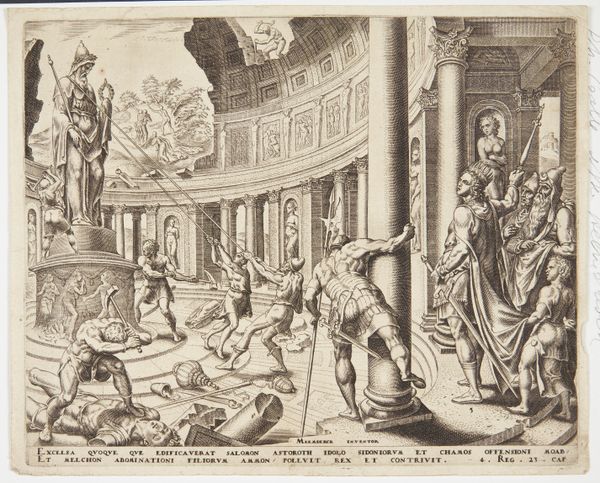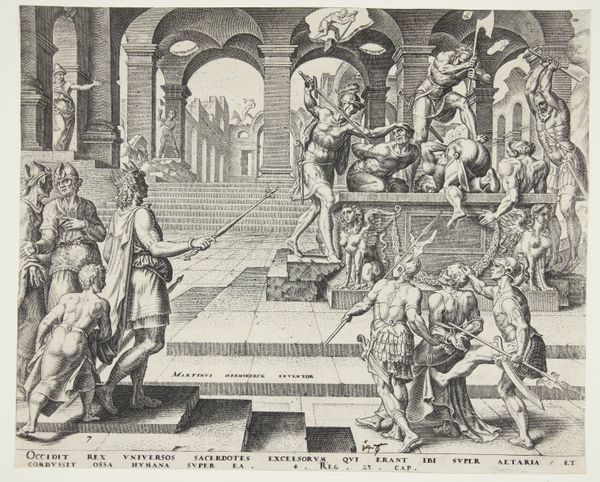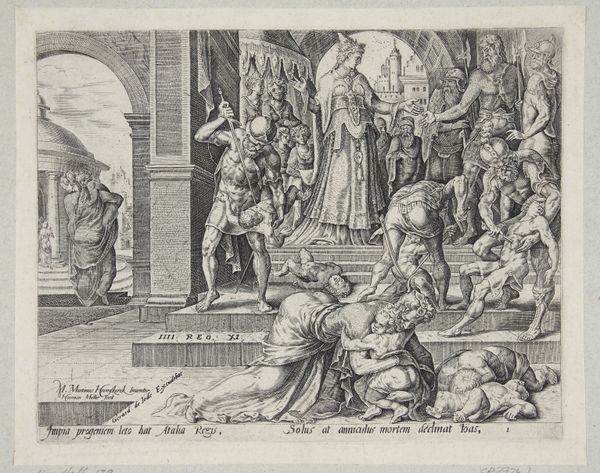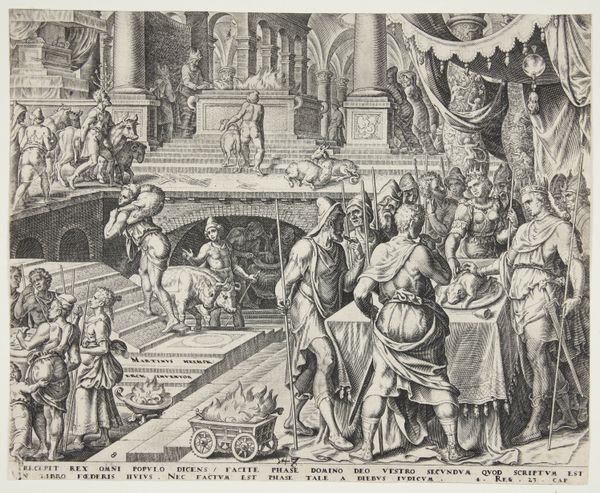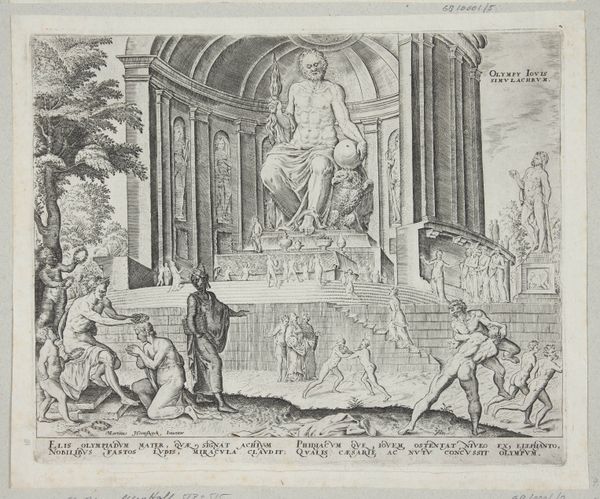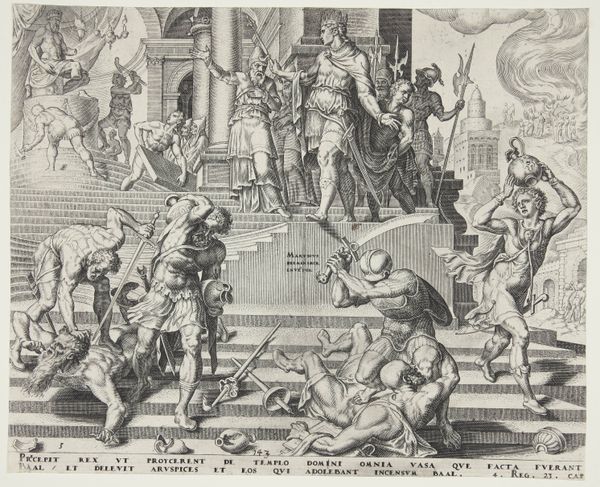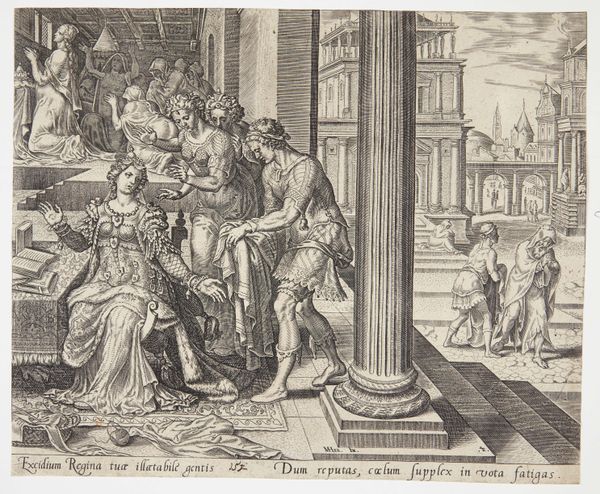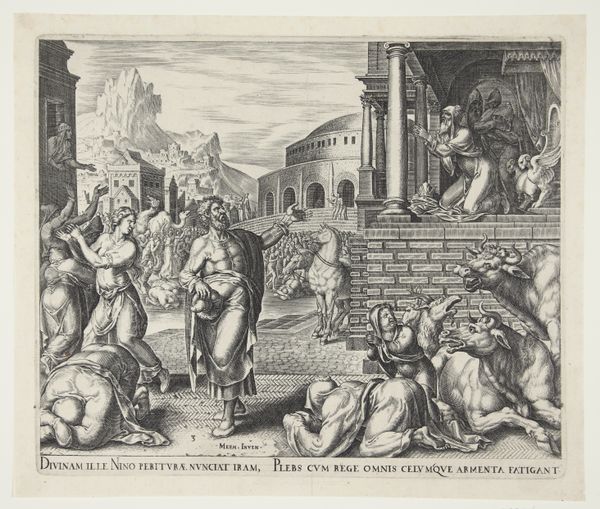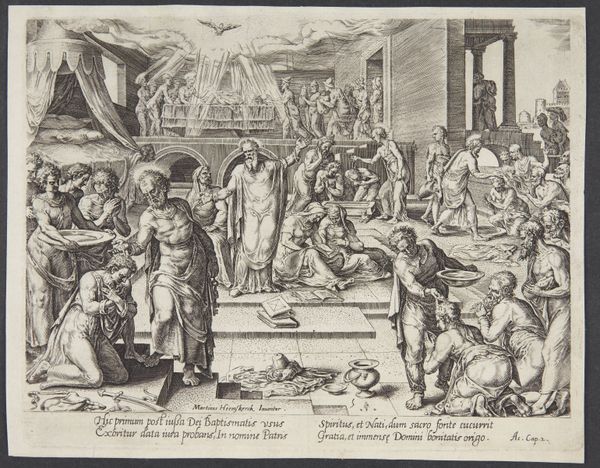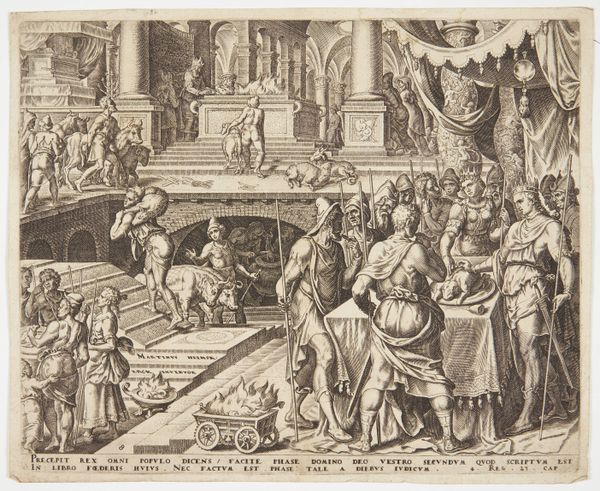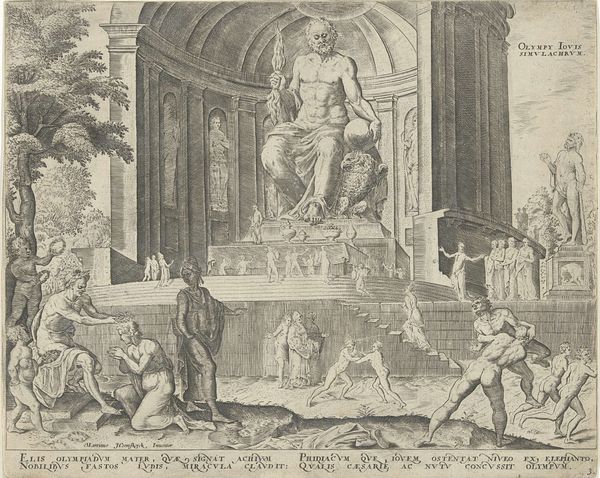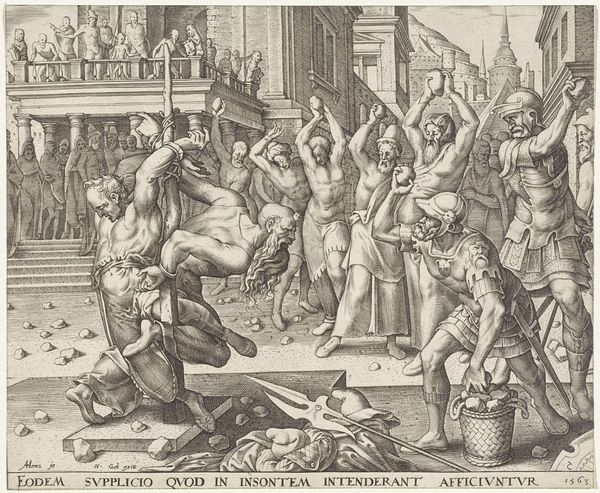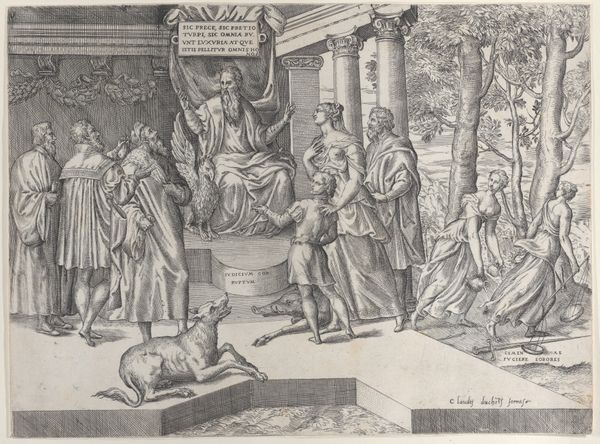
The destruction of the temple of Ashtoreth, Chemosh and Milcom 1567 - 1570
0:00
0:00
print, engraving
#
narrative-art
# print
#
figuration
#
11_renaissance
#
history-painting
#
academic-art
#
engraving
#
realism
Dimensions: 205 mm (height) x 250 mm (width) (bladmaal)
Curator: Before us, we have Philips Galle's engraving, "The Destruction of the Temple of Ashtoreth, Chemosh and Milcom," dating back to sometime between 1567 and 1570. Editor: There’s such a ferocious energy in this scene. The rawness of the figures contrasts against this exquisitely rendered architecture. The eye’s drawn to those taut lines as men try to topple the pagan idols. Curator: Galle created this print during a period of intense religious and political upheaval, and as a popular and prolific printmaker his engravings certainly played a part in shaping public perception. The scene illustrates a narrative rooted in religious reform—an Old Testament purging of what was perceived as idolatry. It reinforced the narratives that resonated with certain Protestant reformist groups. Editor: I see a masterful use of line here, from the bold, deep cuts that define the musculature of the destroyers to the finer, more delicate lines creating textures on the robes and columns. The way Galle models the figures with cross-hatching creates volume that really pops, despite the two-dimensional nature of the medium. Curator: And those figures populate a meticulously detailed setting, referencing classical architecture. Notice how this gives a sense of historical grandeur to the act of iconoclasm. It emphasizes the "rightness" of the iconoclasts. Editor: Yet the space feels almost stage-like; the receding lines of the rotunda and the arrangement of figures give a perspectival illusion of depth, drawing the viewer into this dramatic conflict. And I am intrigued by how Galle creates dramatic lighting effects by varying the density of lines, illuminating key figures and architectural elements. Curator: It does bring into stark relief how religion can be mobilized through images. And that the toppling of these statues weren't random events. The leaders—those older, robed men—directing the actions shows how sanctioned these destructive acts were. It was statecraft in action. Editor: Looking closely, the level of detail achieved with engraving is impressive—the precision of the architectural elements, the dynamism in the figures’ poses. It all attests to Galle's skill and the sophistication of printmaking as a medium in that period. Curator: Seeing the level of calculated effort—from the engraving’s artistry to the orchestration of the event it portrays—leaves me pondering on the complex intersections of art, religion, and politics. Editor: For me, it’s how form serves content here. How the carefully chosen artistic strategies heighten the emotional impact, rendering this historical event as timeless drama.
Comments
No comments
Be the first to comment and join the conversation on the ultimate creative platform.
